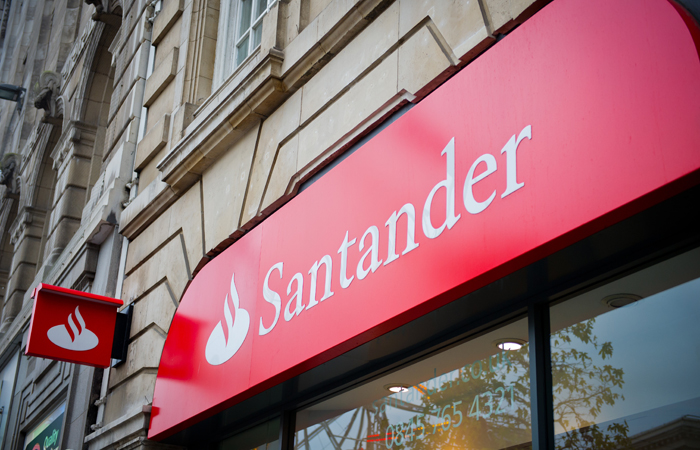Santander profits take battering including from £38m mis-selling affair

Spanish-owned banking giant Santander UK, which this month announced that it is to close 140 of its British branches, has announced plans to compensate mistreated credit card customers to the tune of £58 million.
The news came as the lender also disclosed that it had missed several performance targets.
The first large British bank to report 2018 numbers, Santander UK posted pre-tax profit of £1.6 billion, 14 per cent lower than the £1.8bn reported a year earlier.
On an underlying basis, pre-tax profit declined to £1.7bn in 2018 from £2bn.
Net interest income fell 4 per cent to £3.1bn due to pressures on new mortgage lending margins and falling revenues.
Also included in special provisions was the £58 million charge in relation to consumer credit business operations. “This charge is management’s current best estimate as we continue to assess the scope of this issue,” it said.
The outlay is understood to be intended to cover the costs incurred because of breaches of the Consumer Credit Act in the bank’s treatment of credit card customers between four and ten years ago.
The Financial Conduct Authority is being kept informed but it remains unclear whether Santander will be fined over the lapses.
The latest setback comes a month after Santander UK was fined £33 million for failing to inform the beneficiaries of the wills of 40,000 dead customers that they were owed money, in some cases for decades.
In a downbeat statement Santander warned that it expected costs to increase further this year, despite the plan to slash the size of its branch network.
Customer deposits fell to £142.1bn from £143.8bn due to a £3.5bn decline in savings balances.
Latest results also showed the bottom-line being hit by lower margins on mortgages and fewer customers staying when their mortgage defaults to standard variable terms after initial offers expire.
But net mortgage lending – gross loans less repayments – came to £3.3bn in 2018, which Santander said was its strongest lending in more than three years “despite the highly competitive market”.
The bank was also hit by higher regulatory costs related to ring-fencing to keep personal and small business banking services separate, open banking, PSD2 – the European Union’s second payment services directive, and MIFID II.
Among 2018 targets missed was the goal set three years ago of having 4.7 million retail customers with more than one of its products. The bank boosted the number of these “loyal customers” by 200,000 to 4.1 million.
It also failed to hit its goal of 6.5 million digital customers, the number growing by 500,000 to 5.5 million.
Another disappointment was the aim of growing net fee and commission income by 5 to 10 per cent. The actual outcome was 2 per cent because of the regulatory crackdown on overdrafts.
The Common Equity Tier 1 (CET1) capital ratio, a key measure of a bank’s financial strength, grew by 1 per cent to 13.2 per cent.
However, chief executive Nathan Bostock, 58, whose bonus is partly linked to targets for small business customer growth, capital strength, non-performing loans and return on tangible equity largely hit these.
Mr Bostock said: “Our 2018 financial performance reflects our strategy of selective growth, while actively managing costs in the competitive and uncertain operating environment. In the current uncertain environment, we will do everything we can to support our customers and deliver on our purpose of helping people and business prosper.”
Along with its results, Santander said it is preparing for all outcomes from Britain’s departure from the European Union, adding that its Brexit preparations are “comprehensive” and take into account “the nationality and location of our people and customers, contract continuity, financial markets infrastructure such as clearing, access to Euro payment systems as well as third party services and flows of data into and out of the European Economic Area”.
However, the lender added that it holds a cautious outlook for 2019 as it cited risks associated with trade restrictions, geopolitical uncertainty and slower growth in developed economies as well as a “highly competitive banking market and demanding regulatory agenda in the UK”.




